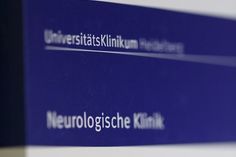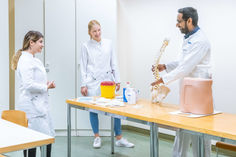Acute & Critical Care Neurology
The Acute and Critical Care Neurology Program is based on the strong clinical and scientific tradition in emergency and neurocritical care developed in Heidelberg over the last 30 years. With a focus on patients with severe cerebrovascular diseases requiring intensive care unit treatment and mechanical ventilation, Heidelberg has led the way to improve patients’ prognosis and regain quality of life. In 2010, >450 patients were admitted to the Neurological Intensive Care Unit (NICU) with an average length of stay of 11 days. Numbers increased to >960 in 2022 with an average length of stay of 7 days. These severely afflicted and complex patients are taken care of by a team of over 40 specialized nurses, 6 residents, 1 resident-in-chief and 1 attending holding sub-specialization in neurocritical care. The NICU team provides optimal diagnosis and individualized treatment plans for critically ill patients in the 12-bed-NICU, the ER and the angiography suite during endovascular interventions, and responds together with the anesthesiologists to resuscitation alarms of the entire Kopfklinik and NCT. Overarching goal of the program is the development of cutting-edge approaches in neurocritical care and to be involved in and lead (inter)national collaborations to further optimize the care of patients with devastating neurologic pathologies in the acute and intensive care setting.
The Acute and Critical Care Neurology Program is part of several research collaborations and networks, such as the DGNI and its research network German NeuroIntensive Trial Engagement (IGNITE), the Deutsche Interdisziplinäre Vereinigung für Intensivmedizin (DIVI), or the Neurocritical Care Society (NCS).







